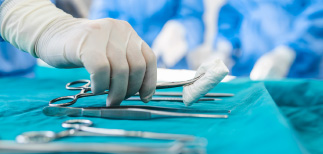Patient Information

Below is an overview of various procedures, their indications, and what to expect before and after surgery.
1. Curettage & Cautery
Indications:
- Superficial basal cell carcinoma (BCC)
- Actinic keratoses
- Seborrhoeic keratoses
- Viral warts
- Small, non-melanocytic lesions
Procedure:
- A curette (a sharp, spoon-shaped instrument) is used to scrape away the lesion.
- Cautery (heat or electrical current) is applied to stop bleeding and destroy residual abnormal tissue.
Aftercare:
- Keep the wound covered for 48 hours.
- A crust will form, which falls off in 1-3 weeks.
- Apply petroleum jelly or a prescribed ointment to aid healing.
Do’s and Don’ts:
- Do keep the wound covered until fully healed.
- Do expect mild redness and scabbing.
- Don’t pick at the scab-it helps prevent scarring.
- Don’t expose the area to direct sunlight until fully healed.
2. Shave Excision
Indications:
- Seborrhoeic keratoses
- Skin tags
- Superficial benign naevi (moles)
- Small, raised lesions
Procedure:
- A dermablade (a flexible, fine razor-like instrument) is used to shave off the lesion at or slightly below skin level.
- The area may be treated with cautery to minimise bleeding.
Aftercare:
- Expect a scab to form, which will drop off within 1-2 weeks.
- The site may appear slightly pink before normal skin colour returns.
Do’s and Don’ts:
- Do apply a moisturising ointment to prevent dryness.
- Do protect the area from sun exposure to avoid pigmentation changes.
- Don’t scratch or rub the healing area.
3. Incisional Biopsy
Indications:
- Suspected malignancies (e.g., melanoma, squamous cell carcinoma)
- Inflammatory skin conditions requiring histological diagnosis
Procedure:
- A small portion of the lesion is removed using a scalpel for laboratory analysis.
- The wound is typically closed with a few stitches.
Aftercare:
- Sutures are usually removed within 5-14 days, depending on the site.
- Keep the area clean and dry for at least 24 hours.
Do’s and Don’ts:
- Do follow instructions for wound care to prevent infection.
- Do limit movement if the biopsy site is in a high-tension area.
- Don’t engage in strenuous activity until stitches are removed.
4. Punch Biopsy
Indications:
- Inflammatory skin conditions (e.g., lupus, psoriasis)
- Suspected malignancies (melanoma, SCC, BCC)
- Unexplained rashes or dermatoses
Procedure:
- A circular blade (punch tool) is used to remove a small core of tissue.
- Depending on the size, the wound may be closed with stitches or left to heal naturally.
Aftercare:
- If stitches are used, they will be removed after 7-14 days.
- Mild bruising and tenderness are normal.
Do’s and Don’ts:
- Do apply prescribed antibiotic ointment.
- Do monitor for signs of infection (increased redness, swelling, or discharge).
- Don’t soak the area in water (e.g., baths, swimming) until fully healed.
5. Excision
Indications:
- Suspicious skin lesions (e.g., melanoma, SCC, BCC)
- Dysplastic naevi (atypical moles)
- Benign growths causing discomfort or cosmetic concerns
Procedure:
- A scalpel is used to remove the lesion along with a small margin of surrounding tissue.
- The wound is closed with stitches.
Aftercare:
- Stitches are removed after 5-14 days, depending on the site.
- Scar management (e.g., silicone gel, massage) may be recommended.
Do’s and Don’ts:
- Do keep the wound clean and dry for at least 24 hours.
- Do take pain relief (e.g., paracetamol) if needed.
- Don’t lift heavy objects or stretch the area excessively.
6. Wide Local Excision (WLE)
Indications:
- Confirmed melanoma requiring removal of a wider margin
- High-risk squamous cell carcinoma
- Recurrence of previously treated skin cancer
Procedure:
- A larger area of skin is removed to ensure no remaining cancerous cells.
- The wound is closed with stitches or, in some cases, a skin graft or flap may be needed.
Aftercare:
- Dressings may need to be changed regularly.
- Healing can take several weeks, especially for larger excisions.
Do’s and Don’ts:
- Do follow wound care instructions carefully.
- Do attend follow-up appointments to monitor healing and recurrence.
- Don’t engage in strenuous activities that may stretch the wound.
What to Expect on the Day of Surgery
- Preparation: The area will be cleaned, and local anaesthetic will be injected.
- Procedure Time: Most minor dermatological surgeries take 15-45 minutes.
- Sensation: You may feel pressure or tugging but no pain due to anaesthesia.
- Aftercare Instructions: These will be provided before you leave.
Do’s and Don’ts After Surgery
Do’s:
- Keep the wound clean and dry.
- Follow instructions on dressing changes.
- Use prescribed ointments or creams as directed.
- Take mild pain relief if needed.
- Protect healing skin from the sun.
- Attend follow-up appointments if scheduled.
Don’ts:
- Don’t pick at scabs or remove dressings early.
- Don’t get the wound excessively wet (showers are usually fine; avoid baths and swimming).
- Don’t engage in vigorous exercise until cleared by your doctor.
- Don’t apply harsh skincare products to the area (e.g., retinoids, exfoliants).
BOOK A CONSULTATION
To book an appointment or to request more information please fill out the form below and we will be in touch shortly. Any information that you provide will remain strictly confidential.